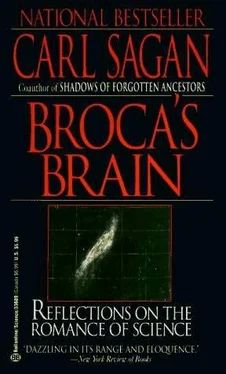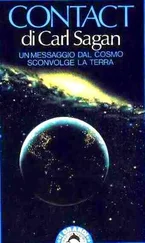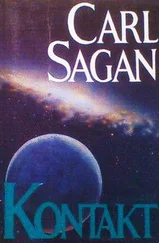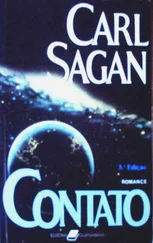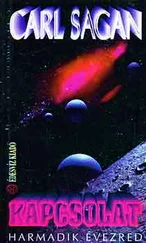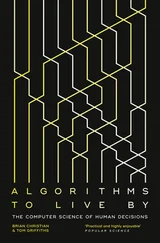Carl Sagan - Broca's Brain - The Romance of Science
Здесь есть возможность читать онлайн «Carl Sagan - Broca's Brain - The Romance of Science» весь текст электронной книги совершенно бесплатно (целиком полную версию без сокращений). В некоторых случаях можно слушать аудио, скачать через торрент в формате fb2 и присутствует краткое содержание. Жанр: Физика, на английском языке. Описание произведения, (предисловие) а так же отзывы посетителей доступны на портале библиотеки ЛибКат.
- Название:Broca's Brain: The Romance of Science
- Автор:
- Жанр:
- Год:неизвестен
- ISBN:нет данных
- Рейтинг книги:3 / 5. Голосов: 1
-
Избранное:Добавить в избранное
- Отзывы:
-
Ваша оценка:
- 60
- 1
- 2
- 3
- 4
- 5
Broca's Brain: The Romance of Science: краткое содержание, описание и аннотация
Предлагаем к чтению аннотацию, описание, краткое содержание или предисловие (зависит от того, что написал сам автор книги «Broca's Brain: The Romance of Science»). Если вы не нашли необходимую информацию о книге — напишите в комментариях, мы постараемся отыскать её.
Broca's Brain: The Romance of Science — читать онлайн бесплатно полную книгу (весь текст) целиком
Ниже представлен текст книги, разбитый по страницам. Система сохранения места последней прочитанной страницы, позволяет с удобством читать онлайн бесплатно книгу «Broca's Brain: The Romance of Science», без необходимости каждый раз заново искать на чём Вы остановились. Поставьте закладку, и сможете в любой момент перейти на страницу, на которой закончили чтение.
Интервал:
Закладка:
In 1897, in connection with an exhibition in Brussels, the Belgian government offered prizes for the solutions of certain problems in astronomy. These problems included the numerical value ofred prizes for the solutions of certain problems in astronomy. These problems included the numerical value of the acceleration due to gravity on Earth, the secular acceleration of the Moon, the net motion of the solar system through space, the variation of latitude, the photography of planetary surfaces, and the nature of the canals of Mars. A final topic was the invention of a method to observe the solar corona in the absence of an eclipse. Monthly Notices (20:145) commented: “… if this pecuniary reward does induce anyone to solve this last problem or in fact any of the others, we think the money will be well spent.”
However, reading the scientific papers of this time, one gets the impression that the focus had shifted to other topics than those for which prizes were-being given. Sir William and Lady Huggins performed laboratory experiments which showed that at low pressures the emission spectrum of calcium exhibited only the so-called H and K lines. They concluded that the Sun was composed chiefly of hydrogen, helium, “coronium” and calcium. Huggins had earlier established a stellar spectral sequence, which he believed was evolutionary. The Darwinian influence in science was very strong in this period, and among American astronomers T. J. J. See’s work was notably dominated by a Darwinian perspective. It is interesting to compare Huggins’ spectral sequence with the present Morgan-Keenan spectral types:
HUGGINS’ STELLAR SPECTRAL SEQUENCE
Order of Increasing Age - Star (and modern spectral type in parentheses) -
Young-Sirius (A1V)
…
Altair (A7 IV-V)
Rigel (B8Ia)
Deneb (A2Ia)
…
…– Vega (A0V)
– Capella (G8, G0)
Arcturus (K1 III)
Aldebaran (K5 III)-Sun (G0)
Old-Betelgeuse (M2 I)-
Note: The modern stellar spectral sequence runs, from “early” to “late” spectral types, as O, B, A, F, G, K, M. Huggins was very nearly right.
We can see here the origin of the present terms “early” and “late” spectral type, which reflect the Darwinian spirit of late Victorian science. It is also clear that there is a reasonably continuous gradation of spectral types here, and the beginnings-through the later Hertzsprung-Russell diagram-of modern theories of stellar evolution.
There were major developments in physics during this period and readers of Ap. J. were alerted to them by the reprinting of summaries of important papers. Experiments were still being performed on the basic radiation laws. In some papers, the level of physical sophistication was not of the highest caliber, as, for example, in an article in PASP (11:18) where the linear momentum of Mars is calculated as the single product of the mass of the planet and the linear velocity of the surface. It concluded “the planet, exclusive of the cap, has a momentum of 183 and 3/8 septillion foot pounds.” Exponential notation for large numbers was evidently not in wide use.
In this time we have the publication of visual and photographic light curves, for example, of stars in M5; and experiments in filter photography of Orion by Keeler. An obviously exciting topic was time-variable astronomy, which must then have generated something of the excitement that pulsars, quasars and X-ray sources do today. There were many studies of variable velocities in the line of sight from which were derived the orbits of spectroscopic binaries, as well as periodic variations in the apparent velocity of Omicron Ceti from the Doppler displacement of H gamma and other spectral lines.
The first infrared measurements of stars were performed at the Yerkes Observatory by Ernest F. Nichols. The study concludes: “We do not receive from Arcturus more heat than would reach us from a candle at a distance of 5 or 6 miles.” No further calculations are given. The first experimental observations of the infrared opacity of carbon dioxide and water vapor were performed in this period by Rubens and Aschkinass, who essentially discovered the v 2fundamental of carbon dioxide at 15 microns and the pure rotation spectrum of water.
There is preliminary photographic spectroscopy of the Andromeda nebula by Julius Scheiner at Potsdam, Germany, who concludes correctly that “the previous suspicion that the spiral nebulae are star clusters is now raised to a certainty.” As an example of the level of personal vituperation tolerated at this time, the following is an extract from a paper by Scheiner in which W. W. Campbell is criticized: “In the November number of the Astrophysical Journal , Professor Campbell attacks, with much indignation, some remarks of mine criticizing his discoveries… Such sensitiveness is somewhat surprising on the part of one who is himself given to severely taking others to task. Further, an astronomer who frequently observes phenomena which others cannot see, and fails to see those which others can, must be prepared to have his opinions contested. If, as Professor Campbell complains, I have only supported my views by a single example, I was only withheld by courteous motives from adding another. Namely, the fact that Professor Campbell cannot perceive the lines of aqueous vapor in the spectrum of Mars which were seen by Huggins and Vogel in the first place, and, after Mr. Campbell had called their existence in question, were again seen and identified with certainty by Professor Wilsing and myself.” The amount of water vapor in the Martian atmosphere that is now known to exist would have been entirely indetectable by the spectroscopic methods then in use.
Spectroscopy was a dominant element in late-nineteenth-century science. Ap. J. was busily publishing Rowland’s solar spectrum, which ran to 20,000 wavelengths, each to seven significant figures. It published a major obituary of Bunsen. Occasionally the astronomers took note of the extraordinary nature of their discoveries: “It is simply amazing that the feeble twinkling light of a star can be made to produce such an autographic record of substance and condition of the inconceivably distant luminary.” A major topic of debate for the Astrophysical Journal was whether spectra should be shown with red to the left or to the right. Those who favored red to the left cited the analogy of the piano (where high frequencies are to the right), but Ap. J. opted gamely for red to the right. Some room for compromise was available on whether, in lists of wavelengths, red should be at the top or at the bottom. Feelings ran high, and Huggins wrote to say that “any change… would be little less than intolerable.” But the Ap. J. won anyway.
Another major discussion in this period was on the nature of sunspots. G. Johnstone Stoney proposed that they were caused by a layer of condensed clouds in the photosphere of the Sun. But Wilson and FitzGerald objected to this on the ground that no conceivable condensates could exist at these high temperatures, with the possible exception of carbon. They suggested instead and very vaguely that sunspots are due to “reflection by convection streams of gas.” Evershed had a more ingenious idea. He thought that sunspots were holes in the outer photosphere of the Sun, permitting us to see to much greater and hotter depths. But why are they dark? He proposed that all the radiation would be moved from the visible to the inaccessible ultraviolet. This, of course, was before the Planck distribution of radiation from a hot object was understood. It was not at this time thought impossible that the spectral distributions of black bodies of different temperatures should cross; and some experimental curves of this period indeed showed such crossing-due, as we now know, to emissivity and absorptivity differences.
Читать дальшеИнтервал:
Закладка:
Похожие книги на «Broca's Brain: The Romance of Science»
Представляем Вашему вниманию похожие книги на «Broca's Brain: The Romance of Science» списком для выбора. Мы отобрали схожую по названию и смыслу литературу в надежде предоставить читателям больше вариантов отыскать новые, интересные, ещё непрочитанные произведения.
Обсуждение, отзывы о книге «Broca's Brain: The Romance of Science» и просто собственные мнения читателей. Оставьте ваши комментарии, напишите, что Вы думаете о произведении, его смысле или главных героях. Укажите что конкретно понравилось, а что нет, и почему Вы так считаете.
